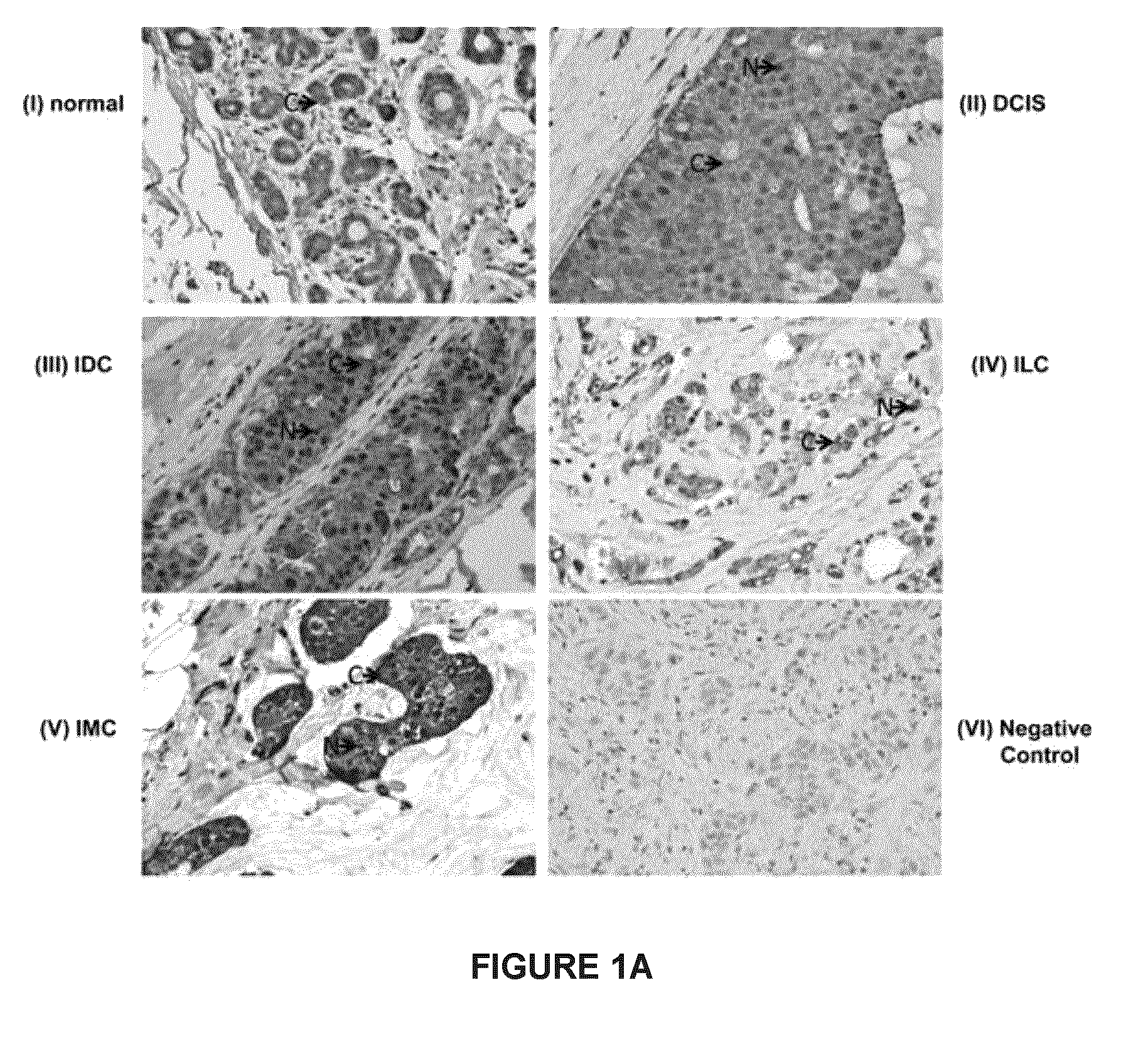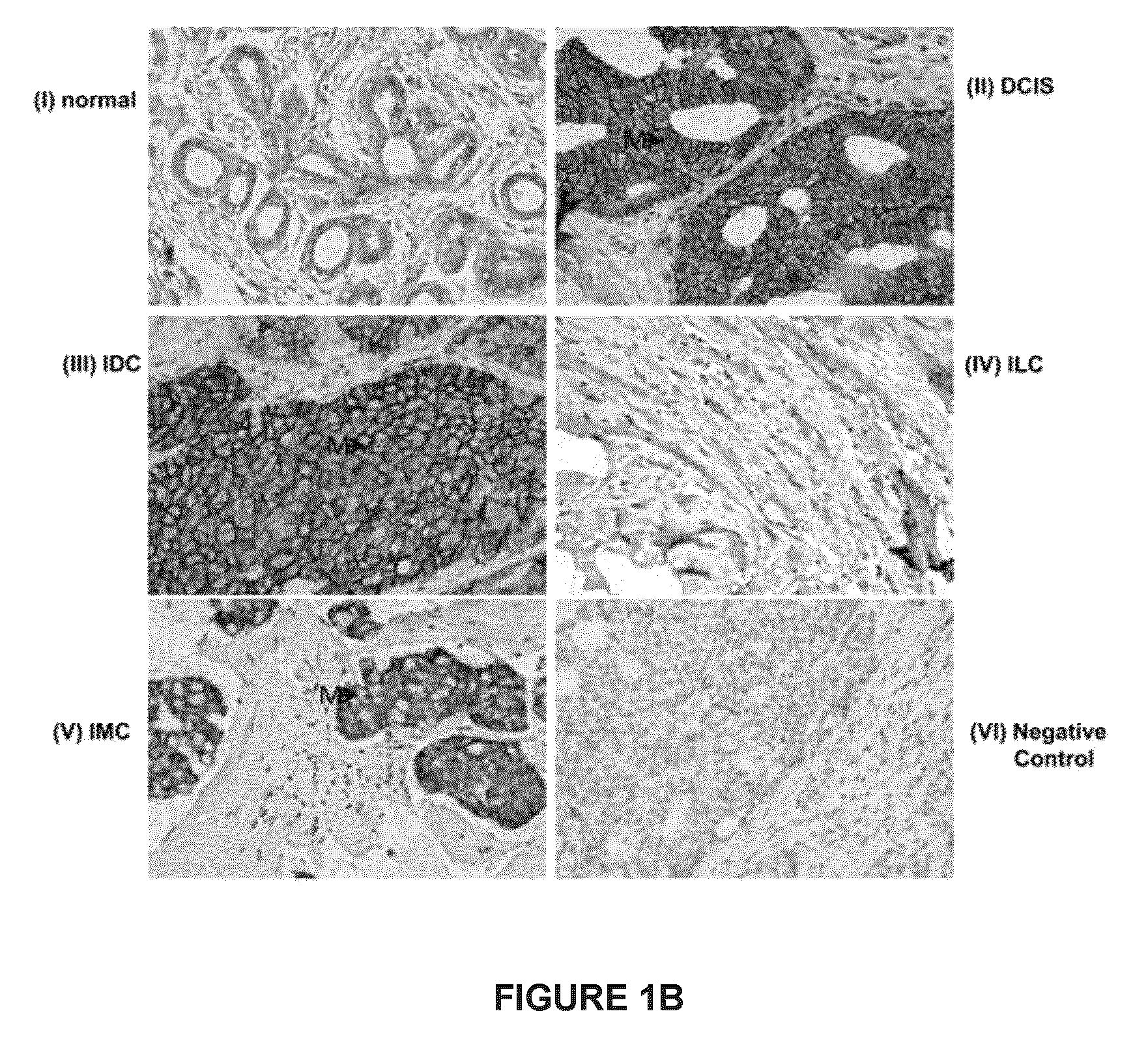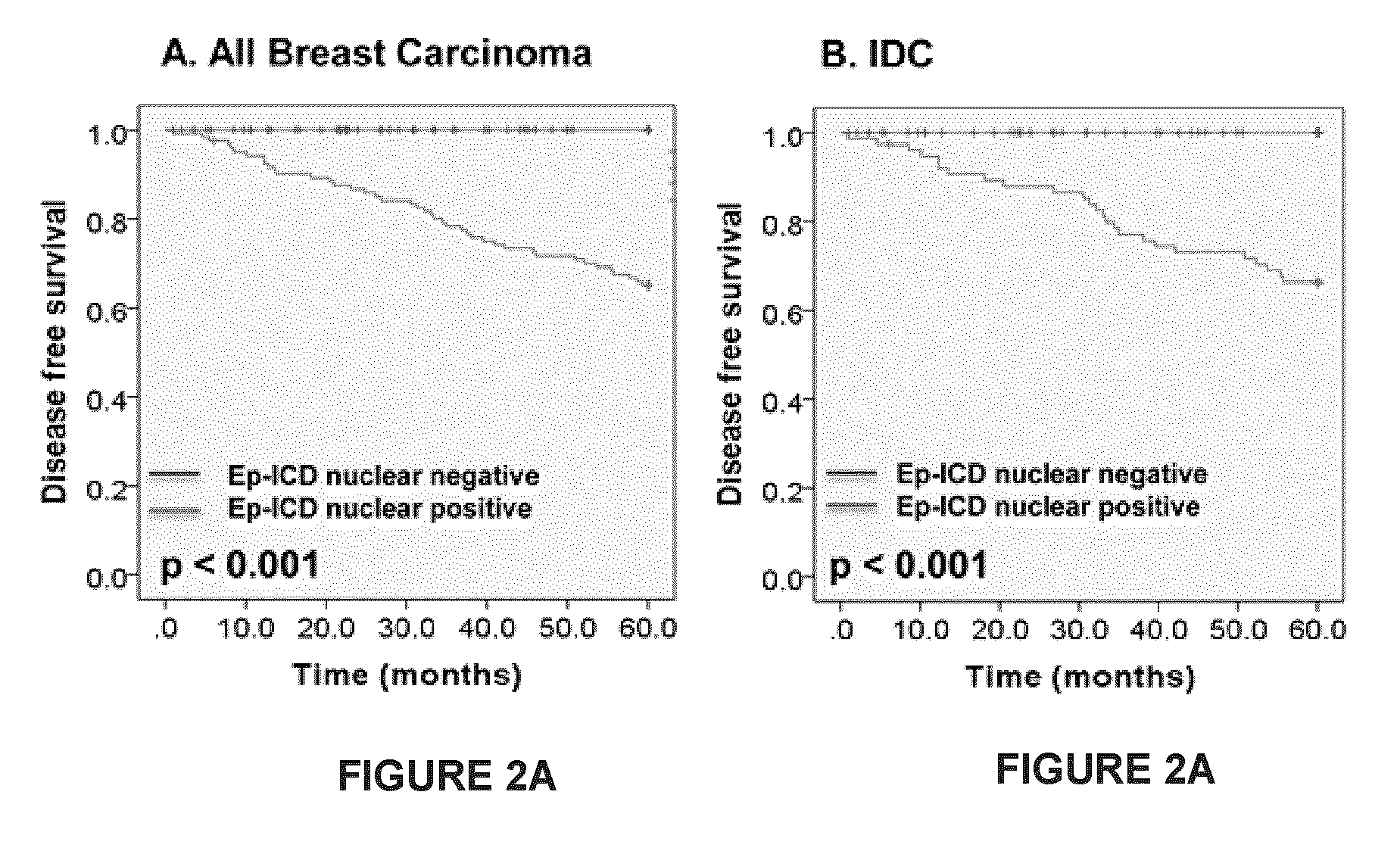Methods for the Prognosis of Breast Cancer
a breast cancer and prognosis technology, applied in the field of breast cancer prognosis, can solve the problems of difficult patient response prediction and patient prognosis, inability to easily access antibodies, and inability to fully sequester epcam protein in tight junctions, and achieve the effects of limited anti-epcam antibodies targeting the epex domain
- Summary
- Abstract
- Description
- Claims
- Application Information
AI Technical Summary
Benefits of technology
Problems solved by technology
Method used
Image
Examples
example
[0083]The prognostic utility of subcellular Ep-ICD expression and membranous EpEx expression in breast cancer are examined. Correlation of subcellular Ep-ICD and membranous EpEX expression with clinic-pathological parameters and follow up of breast cancer patients are also examined.
[0084]Methods
[0085]This retrospective study of biomarkers using breast cancer patients' tissue blocks stored in the archives of the Department of Pathology and Laboratory Medicine and their anonymized clinical data was approved by the Mount Sinai Hospital Research Ethics Board, Toronto, Canada.
[0086]Patient and Tumor Specimens
[0087]The patient cohort consists of 266 breast cancer patients treated at Mount Sinai Hospital (MSH) between 2000 and 2007. The cohort consists of patients who had mastectomy or lumpectomy.
[0088]Inclusion criteria: Breast cancer tissue samples of patients who had up to 60 months follow-up with or without an adverse clinical event; availability of clinical, pathological and treatment...
PUM
| Property | Measurement | Unit |
|---|---|---|
| follow-up time | aaaaa | aaaaa |
| thickness | aaaaa | aaaaa |
| pH | aaaaa | aaaaa |
Abstract
Description
Claims
Application Information
 Login to View More
Login to View More - R&D
- Intellectual Property
- Life Sciences
- Materials
- Tech Scout
- Unparalleled Data Quality
- Higher Quality Content
- 60% Fewer Hallucinations
Browse by: Latest US Patents, China's latest patents, Technical Efficacy Thesaurus, Application Domain, Technology Topic, Popular Technical Reports.
© 2025 PatSnap. All rights reserved.Legal|Privacy policy|Modern Slavery Act Transparency Statement|Sitemap|About US| Contact US: help@patsnap.com



